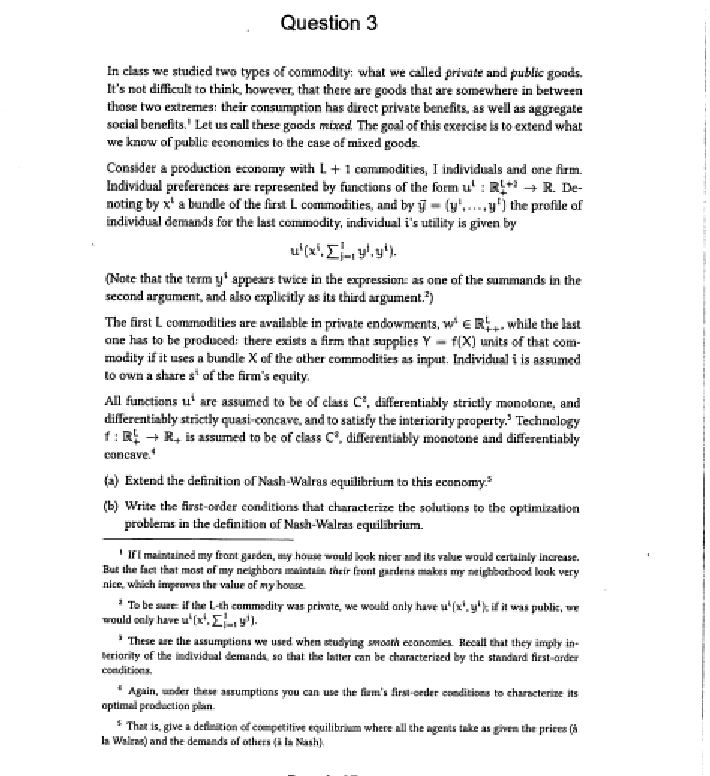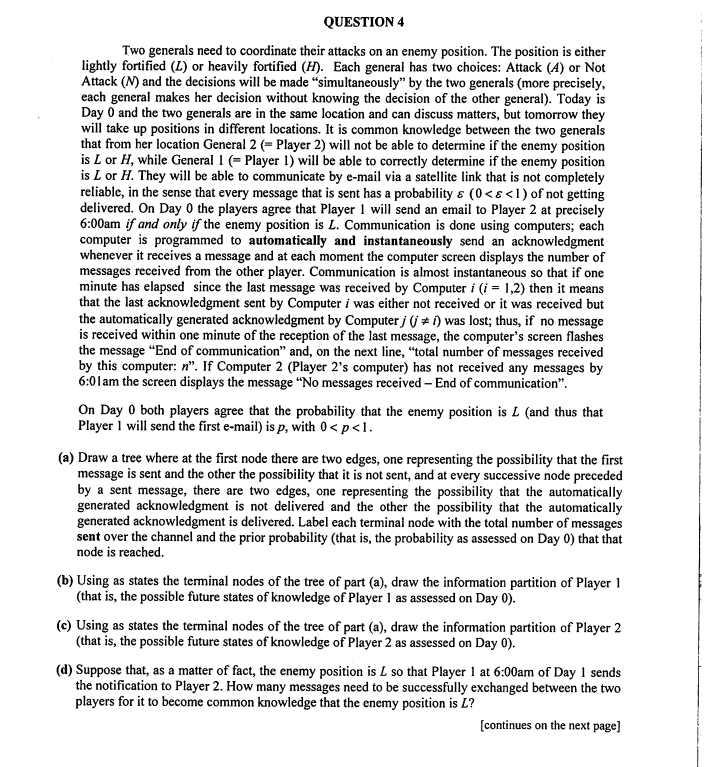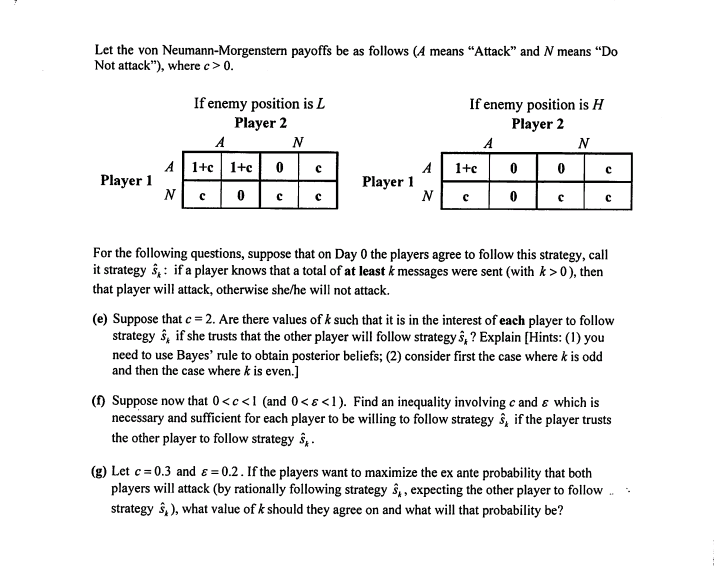


Provide step by step solutions to all questions...its complete kindly help me
Question 3 In class we studied two types of commodity; what we called private and public goods. It's not difficult to think, however, that there are goods that are somewhere in between those two extremes: their consumption has direct private benefits, as well as aggregate social benefits. " Let us call these goods mixed, The goal of this exercise is to extend what we know of pablic economics to the case of mixed goods Consider a production economy with L + 1 commodities, I individuals and one firm. Individual preferences are represented by functions of the form u' : R(+ + R. De- noting by x' a bundle of the first L commodities, and by ] = (y ,....y'] the profile of individual demands for the last commodity, individual i's utility is given by (Note that the term y' appears twice in the expression: as one of the summands in the second argument, and also explicitly as its third argument.") The first L commodities are available in private endowments, we R,. while the last one has to be produced: there exists a firm that supplies Y - f(X) units of that com- modity if it uses a bundle X of the other commodities as input. Individual i is assumed to own a share s' of the firm's equity. All functions u' are assumed to be of class C', differentiably strictly monotone, and differentiably strictly quasi-concave, and to satisfy the interiorily property.' Technology f : 01 + R, is assumed to be of class C', differentiably monotone and differentiably concave. ' () Extend the definition of Nash-Walras equilibrium to this economy.* (bj Write the first-order conditions that characterize the solutions to the optimization problems in the definition of Nash-Walras equilibrium. I'I maintained my front garden, my house would look nicer and its value would certainly Increase. But the fact that most of my neighbors maintain their front gardens makes my meighborhood look very nice, which improves the value of my house To be sure if the Lech commodity was private, we would only have u' [x'. y' ): if it was public, we would only have u [x . I . y'1. These are the assumptions we used when studying smoom economies. Recall that they imply in- Priority of the individual demands. so that the latter can be characterized by the standard first order conditions " Apain, under theer assumptions you can use the firm's first-order conditions to characterize its optimal production plan- That is, give a deduction of competitive equilibrium where all the agents take as green the prices (a In Walkas) and the demands of others (1 la Nash].QUESTION 4 Two generals need to coordinate their attacks on an enemy position. The position is either lightly fortified ([) or heavily fortified (F). Each general has two choices: Attack (A) or Not Attack (N) and the decisions will be made "simultaneously" by the two generals (more precisely, each general makes her decision without knowing the decision of the other general). Today is Day 0 and the two generals are in the same location and can discuss matters, but tomorrow they will take up positions in different locations. It is common knowledge between the two generals that from her location General 2 (= Player 2) will not be able to determine if the enemy position is L or H, while General 1 (= Player 1) will be able to correctly determine if the enemy position is L or H. They will be able to communicate by e-mail via a satellite link that is not completely reliable, in the sense that every message that is sent has a probability & (0 0. If enemy position is L If enemy position is H Player 2 Player 2 A N A N A 1+c 1+c C 1+c C Player 1 Player 1 N N For the following questions, suppose that on Day 0 the players agree to follow this strategy, call it strategy s, : if a player knows that a total of at least & messages were sent (with * > 0), then that player will attack, otherwise she/he will not attack. (e) Suppose that c = 2. Are there values of & such that it is in the interest of each player to follow strategy s, if she trusts that the other player will follow strategy s, ? Explain [Hints: (1) you need to use Bayes' rule to obtain posterior beliefs; (2) consider first the case where k is odd and then the case where * is even.] (f) Suppose now that 0












